EDITOR’S NOTE: Traveleater James is a sushi enthusiast and owner of a sushi blog called Easy Homemade Sushi. He has been to Japan numerous times and loves Japanese food and culture. He is also a passionate writer and likes to share his experiences and knowledge through his blog.
A trip to Japan is not just your ticket to discovering the fascinating culture of the country, but also experiencing their highly intriguing and varied traditional cuisine. Talk about food in Japan, and the first thing that comes to mind is sushi.
It’s not until you visit Japan that you realize how tough it can be to order a plate of sushi. You’ve probably gorged on sushi roll after sushi roll at the Japanese restaurant close to your office or home, but tasting sushi in Japan is something you will likely hold close to your heart and remember for the rest of your life.
Everything from the feeling of entering the holy temple of sushi to watching a master Japanese chef prepare the different types of sushi in front of your eyes is an experience to cherish. Some restaurants may have just one or two kinds of sushi, but there are other places where you will be simply spoilt for choice.
If it’s your first time in a dedicated sushi bar or restaurant in Japan, then you may feel overwhelmed with the many different types of sushi available to you. Some types of sushi may not be familiar to you even if you consider yourself the expert back home.
To make it easier for you to understand what’s on the menu and on your plate, we have created this first-hand sushi guide to help you get to grips with the different types of sushi you can get in Japan. Read on to find out more about this tempting dish of rice, nori seaweed, and everything in between and over it.
Save This on Pinterest!
No time to read this guide on the different types of sushi in Japan? Click on the save button and pin it for later!
WHAT IS SUSHI?
Before anything, let’s quickly describe what sushi is. Sushi is a Japanese dish consisting of specially prepared vinegar rice mixed with some type of fish or seafood. The seafood is usually raw but it can sometimes be cooked.
When people think of sushi, the first thing that usually comes to mind is the piece of raw fish, but the most important part of sushi is actually the vinegared rice. The word sushi refers to the slightly sour flavor of the vinegar rice. If you mix raw fish with regular rice, then it isn’t sushi.
How the sushi is made and what ingredients it’s made with determines the different types of sushi we’ll describe in this article. There are several kinds but the two main types of sushi in Japan are nigiri sushi and maki sushi.
HOW TO PROPERLY EAT SUSHI
Outside of Japan, many people make the mistake of adding a big dollop of wasabi in soy sauce and mixing it into a cloudy mess. We then take our beautiful piece of sushi and dunk it in the wasabi-soy sauce mix. Many of us are used to doing this but it isn’t the proper way to eat sushi in Japan.
Sushi chefs will already put the right amount of wasabi in your sushi so all you have to do is dip it ever so lightly in the soy sauce. If you want a little more burn, then you can rub a small amount of wasabi directly onto the raw fish. But be sure to do this sparingly as some sushi chefs in Japan may be offended by this. To them, the sushi was already seasoned perfectly so there’s no need for gratuitous flavorings.
Sushi pros will pick up the sushi with their chopsticks and put it in their mouths upside down, in one bite, with the raw fish against their tongue. It’s also perfectly acceptable to eat sushi with your hands in Japan, as long as you clean your hands first using the moist towel.
Any typical sushi restaurant will have fresh ginger at the table. Be sure to eat a few pieces between bites of sushi to cleanse your palate.
POPULAR TYPES OF SUSHI YOU MAY NOT FIND IN JAPAN
If you’re not from Japan and love eating sushi, then you’ve probably had your fair share of popular sushi rolls like the California roll, spicy tuna roll, Philly roll, rainbow roll, shrimp tempura roll, and spider roll (fried soft shell crab). But you may be surprised that many of your favorite sushi rolls are western creations and not as readily available in Japan.
To help expand your knowledge and love for sushi, we’ve left out out the dragon rolls and spider rolls to focus on the more unique, interesting, and traditional types of sushi you can find in Japan. Some of these types of sushi are available only in Japan so we urge you to try as many of them as you can while you’re there.
12 DIFFERENT TYPES OF SUSHI TO TRY IN JAPAN
1. Nigiri Sushi
Nigiri sushi (hand-pressed) is the most common type of sushi in Japan and is shaped by the chef’s own hands to give it a unique shape. It comprises of a bed of vinegared rice compressed into an oval shape, molded by hand, and topped with neta (fish).
The typical options of neta here are tuna, salmon, sea eel, freshwater eel, tamago, squid, or octopus. It is served with wasabi, soy sauce, and pickled ginger. As described, the chef already adds the right amount of wasabi and sauce to sushi, so you must refrain from overdoing it when eating.
The term nigiri means “to hold, grab, or squeeze”, and it refers to the chef’s hand motion when shaping the sushi rice with his fingers.

2. Maki Sushi
Western sushi rolls like the Philly roll, spicy tuna roll, spider roll, and rainbow roll may not be as easy to find but that doesn’t mean sushi rolls aren’t one of the most popular types of sushi in Japan. They are. They just exist in more traditional and often simpler versions like the tekka maki or tuna roll pictured below.
Like nigiri sushi, maki sushi rolls are among the most common types of sushi in Japan. They refer to fish, vegetables, and other ingredients rolled inside a sheet of nori (seaweed) with vinegar rice and then sliced into round bite-sized pieces. The maki roll is basically the same thing as the sushi rolls you find at home but less fancy and with fewer ingredients.
The most common types of maki sushi rolls in Japan are tekka maki, kappa maki (cucumber sushi roll), and futomaki (large sushi rolls with multiple ingredients). Many sushi restaurants in the west serve these but some of the less common types of sushi rolls that you may not have heard of include kanpyo maki (dried gourd sushi roll), natto maki (fermented soybean sushi roll), and oshiko maki (pickled daikon sushi roll).

Photo by ryzhkov86 via Depositphotos
3. Chirashi Sushi
Chirashi is one of the most comforting sushi types in Japan, and it’s so named because it comprises ingredients scattered in a bowl. In Tokyo, this type of sushi may be also called kaisen chirashi sushi or edomae chirashi sushi due to slight differences in their arrangement.
The most common type of chirashi is sashimi nicely arranged over sushi rice, while the other variation has all of the ingredients mixed together. Besides the sushi rice, other ingredients may include kanpyo (gourd strips), bamboo shoots, fish cakes, inari age, avocado, green beans, sakura denbu (seasoned codfish), and tobiko (flying fish roe).
Chirashi sushi is the easiest type of sushi to prepare and is a popular dish during festivals, parties, and family gatherings.
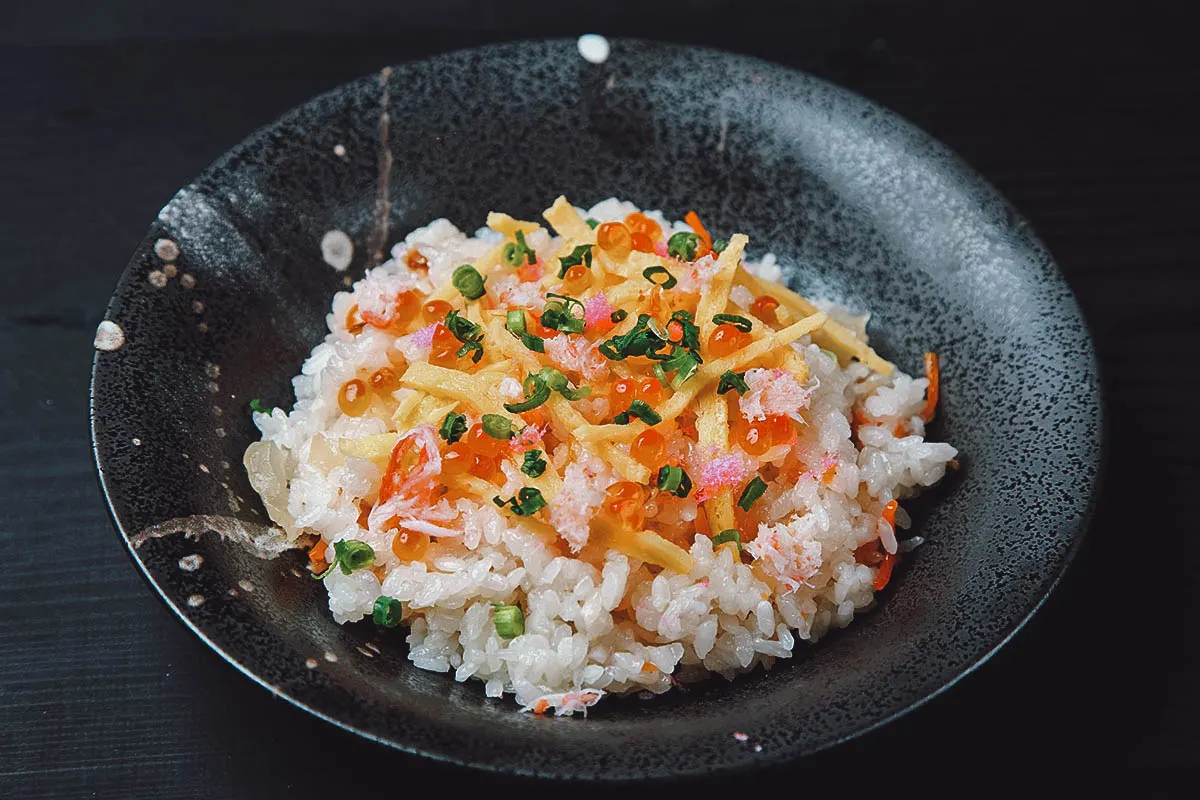
Photo by deeblue via Depositphotos
4. Narezushi
The term “Narezushi” is believed to have been coined in the 10th century when the first ever forms of sushi appeared. It was used as a method of preserving fish by pickling it with rice and salt. In those days, rice was discarded and only fish was consumed.
Although sushi has come a long way since it was first invented, even today you can find traditional narezushi dishes in many sushi restaurants. The name itself is an ode to its creation and ancient history, so it’s worth trying during your trip to Japan.
This ancient type of sushi looks nothing like modern-day sushi because it is served as a whole fish and covered in a yogurt-like sauce. The fish is sliced into patterns and arranged over a bed of vinegar rice. We should warn you that this type of sushi could either make or break your appetite, as you typically need an acquired taste to appreciate its flavors.
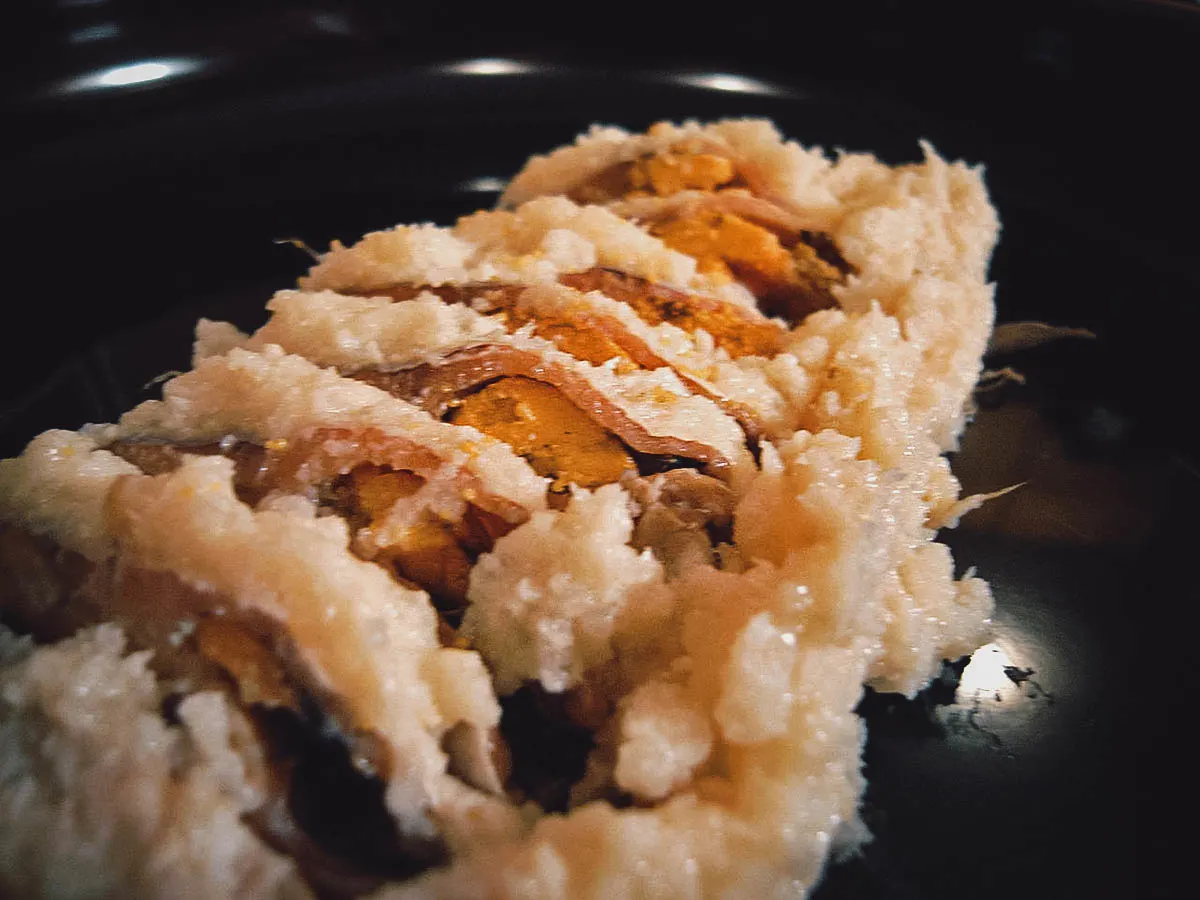
Kida Yasuo, CC BY 2.0, via Wikimedia Commons / Processed in Photoshop and Lightroom
5. Kaburazushi
This is another form of Narezushi that is made using salted buri wrapped with seasoned kabu (turnips). The dish is then pickled in kouji or amazake, so it takes a lot of time to prepare. The resulting taste is quite simply unique.
Kabura Sushi is highly regarded as one of the best winter foods in Kanazawa City and Toyama. The locals have their own unique variations to the traditional recipe, with some also using mackerel in the dish. It is also considered as the staple dish served traditionally at New Year.
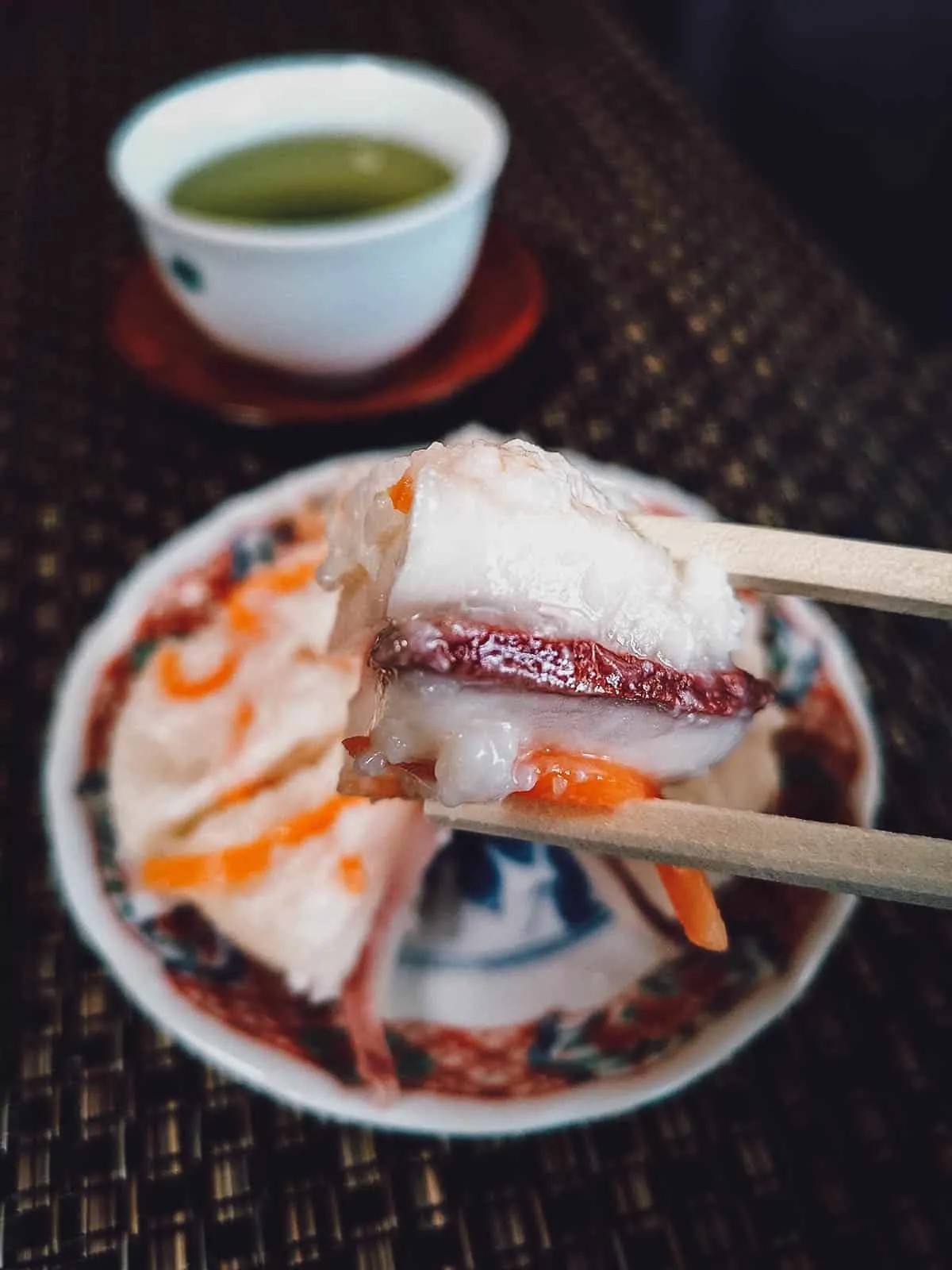
6. Hako Sushi
In Japan, you will find sushi packed in quick takeaway boxes at grocery stores known as hakozushi. Hako means box and zushi is sushi. It has a typical square-shaped presentation comprising of fresh pieces of cube-shaped sushi rice topped with fish or tobiko.
These boxes are presented in an elegant way, making them a popular choice in Japan. It’s worth noting that the process for preparing hako sushi is often time-consuming and labor-intensive.
While hakozushi has become one of the more rare sushi types these days, you can still find several outlets that offer a variety of styles and flavors. Besides presentation, the quality of ingredients is also important while making hako sushi. Some common ingredients include fish, meat, and vegetables.

Photo by f11photo via Depositphotos
7. Oshizushi
Oshizushi, also known as pressed sushi, is probably the oldest type of sushi that you will find in various parts of Japan, especially at airports. Also known as box sushi, oshizushi packs sushi rice and mackerel tightly in boxes for takeout.
This type of sushi is traditionally prepared using a wooden mold called oshibako. These days, plastic molds are also used at eateries to make quick sushi for travelers. They contain alternating layers of seasoned sushi rice, condiments, and toppings.

8. Temarizushi
These tempting sushi balls are not only delightful to eat but also exotic in their appearance and overall appeal. Designed like a traditional Japanese embroidered ball, they look like edible decorative ornaments with bright and colorful toppings.
Temari consists of two main parts – sushi rice as the base and toppings ranging from raw fish to assorted vegetables. There are also cooked toppings such as smoked salmon, boiled crab, grilled meat, and boiled shrimp.
Vegetarians or vegans can also enjoy delicious temari sushi comprising of their favorite vegetables served fresh, grilled, or roasted.

Photo by Oksana6299956 via Depositphotos
9. Sasazushi
If you thought sushi could only be wrapped in a sheet of nori seaweed then this may be a surprise to you. Sasazushi is a type of sushi that comprises of sushi rice, condiments, and toppings such as bamboo shoots, zenmai, warabi, and pickled vegetables.
This is a popular type of sushi that can be served in two main ways. The bamboo leaves can either be wrapped like nori around the sushi rice and toppings, or they can be used as a base plate with the ingredients served on top.
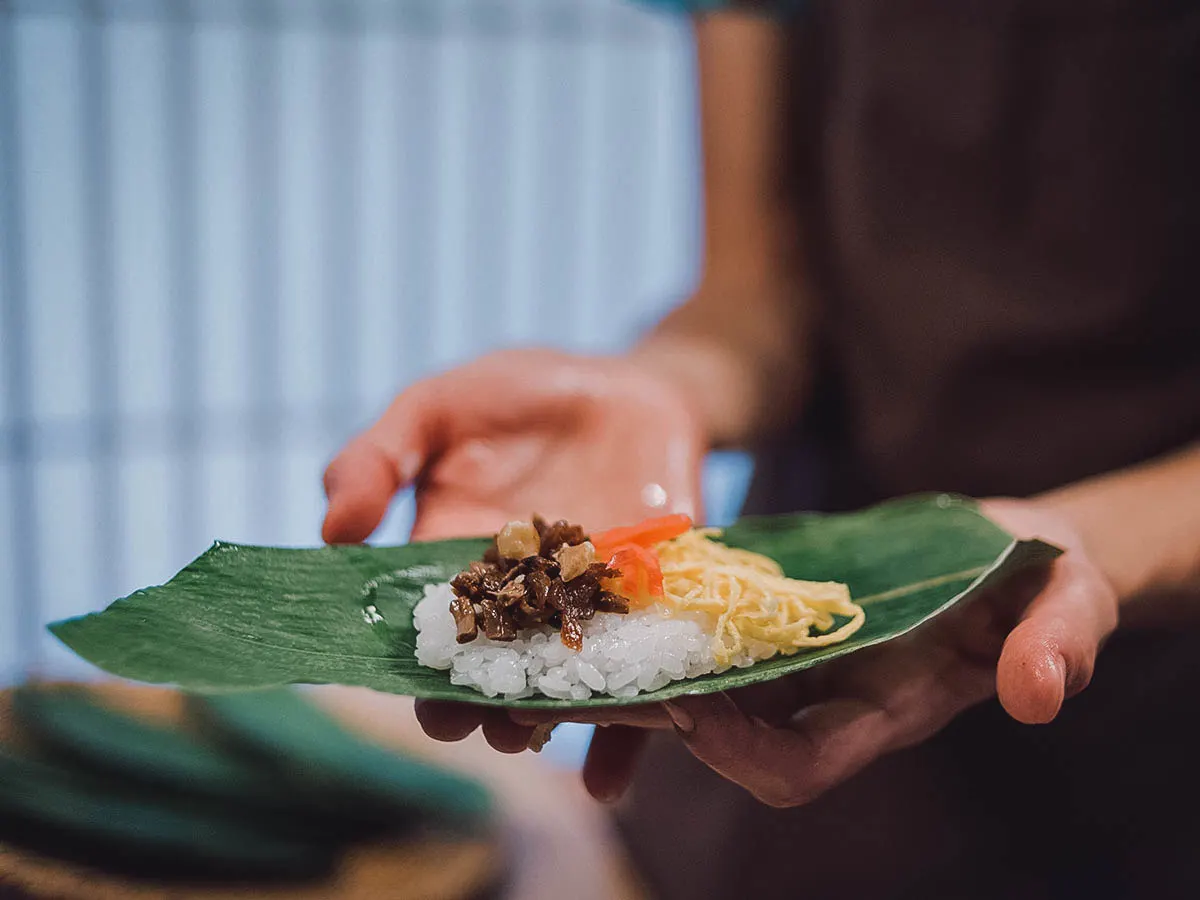
Photo by stephanebdc via Depositphotos
10. Temaki Sushi
If you have never seen temaki before then the format may slightly perplex you, because it’s nothing like traditional sushi. Often referred to as a sushi hand roll, the nori seaweed is rolled into a cone shape with a variety of ingredients packed into it.
These ingredients include sushi rice, avocado or cucumber slices, and fish which all spill out of the wide end. This type of sushi is best eaten by hand instead of with chopsticks and comes in one piece instead of the typical eight on a plate.
The world is going crazy about temaki sushi, with some big outlets popping up in New York, Chicago, and Washington, D.C., to name a few. While you are in Japan, don’t miss out on the opportunity to try these delicious sushi hand rolls in the land that started it all.
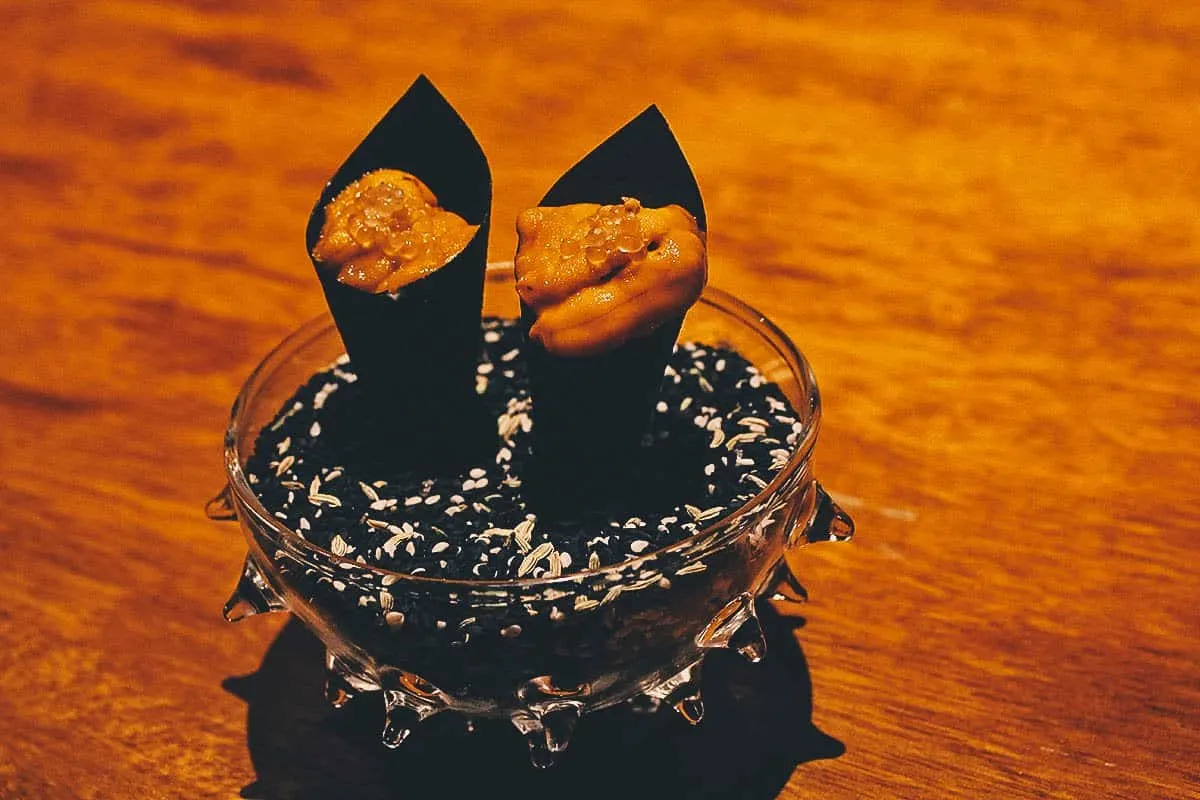
11. Inarizushi
In this unique type of sushi, the creators dropped the sheet of nori and substituted it with aburaage or deep-fried tofu instead. If you love sushi but the taste of nori puts you off, then you may try out this kind of sushi at one of the many inarizushi outlets in Japan.
For those who are unaware, boiled aburaage has a salty-sweet taste and comes in the shape of a bag stuffed with vinegar rice and other typical sushi ingredients. Some examples of common ingredients used are mushrooms, carrots, and kanpyo, or dried gourd shavings.
In some Japanese restaurants, aburaage may be stuffed with chirashizushi as a take-out option. Interestingly, inarizushi is known by different names in different areas of Japan depending on the shape and types of ingredients used.

Photo by topntp via Depositphotos
12. Gunkan Maki Sushi
Invented at the Ginza Kyubey restaurant in 1941, gunkan maki is a special type of nigiri sushi that uses finely chopped ingredients over a bed of sushi rice, and a sheet of nori seaweed on the outside to cover the perimeter. Also known as battleship sushi, it is so named for its boat-like shape.
If you have ever been to Japan, you will know that this is one of the most common types of sushi you can get in the country. It comprises of a hand-formed clump of vinegared rice that has soft toppings that are often scooped in with a spoon.
Some common examples of toppings are fish roe, tuna, or even oysters. You can find this dish in almost every sushi shop and specialty sushi restaurant in Japan.
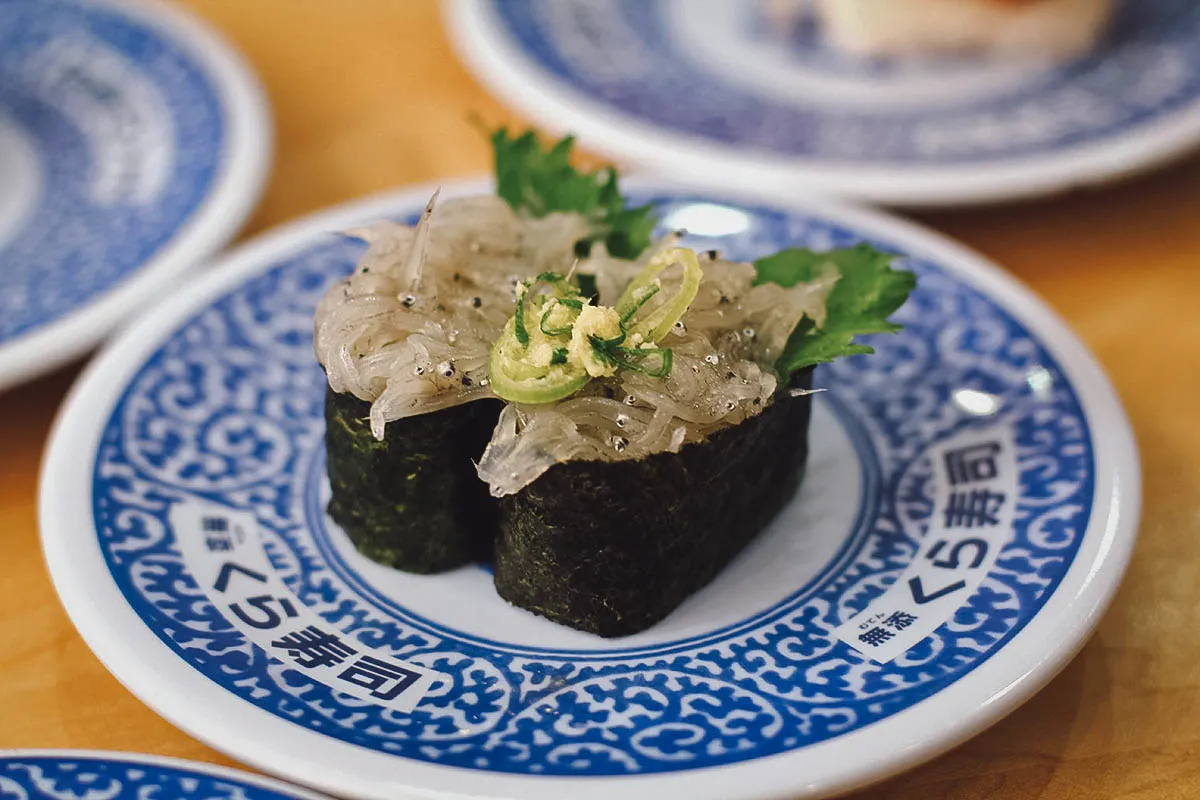
SUSHI TOURS IN JAPAN
If you’d like to learn more about the different types of sushi in Japan, then you may be interesting in going on a sushi tour. No one knows sushi better than the Japanese so you’ll have the benefit of a guide explaining the different types of sushi to you in more detail. Check out Get Your Guide for a list of sushi tours in Tokyo, Osaka, Kyoto, and other cities in Japan.
SUSHI-MAKING CLASSES IN JAPAN
Going on a sushi tour is great but if you’d like a more hands-on experience with sushi in Japan, then you may be interested in taking a sushi-making class. It’s one thing to eat sushi but it’s quite another to learn how to actually make your own sushi roll. Check out Cookly and byFood for a list of sushi-making classes in different cities throughout Japan.
FINAL THOUGHTS ON THE DIFFERENT TYPES OF SUSHI IN JAPAN
Now that you are well aware of the different types of sushi you can get in Japan, you can go ahead and treat your taste buds with the many exotic flavors and aromas these traditional dishes offer.
Popular types of sushi rolls like the spicy tuna roll, Philly roll, spider roll, and rainbow roll will always be there waiting for you at home, so we challenge you to go for the more interesting and less accessible types of sushi while you’re in Japan. Itadakimasu!
Disclosure
Some of the links in this sushi guide are affiliate links. We’ll earn a small commission if you make a purchase at no extra cost to you. As always, we only recommend products and services that we use ourselves and firmly believe in. We really appreciate your support as it helps us make more of these free travel guides. Arigato gozaimasu!

